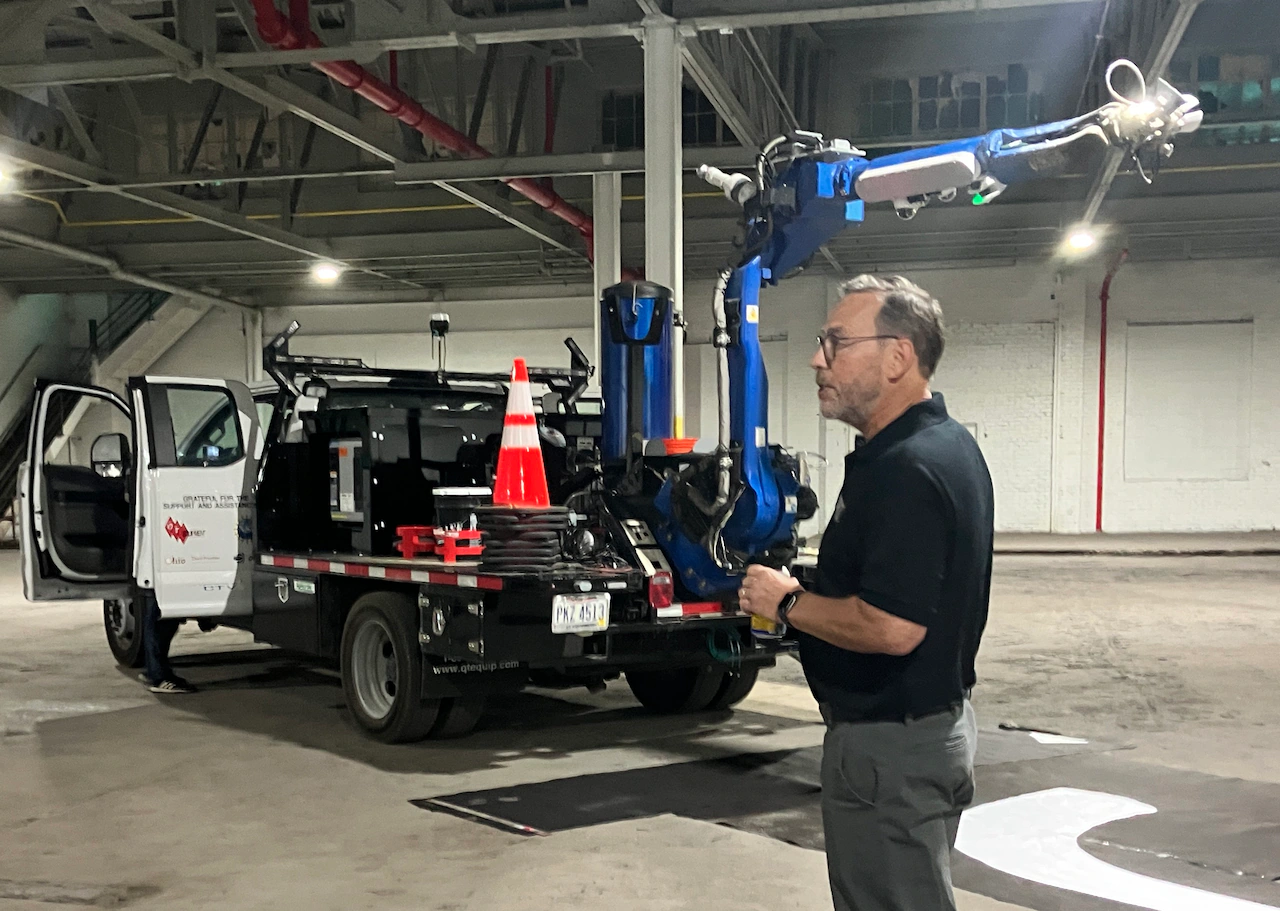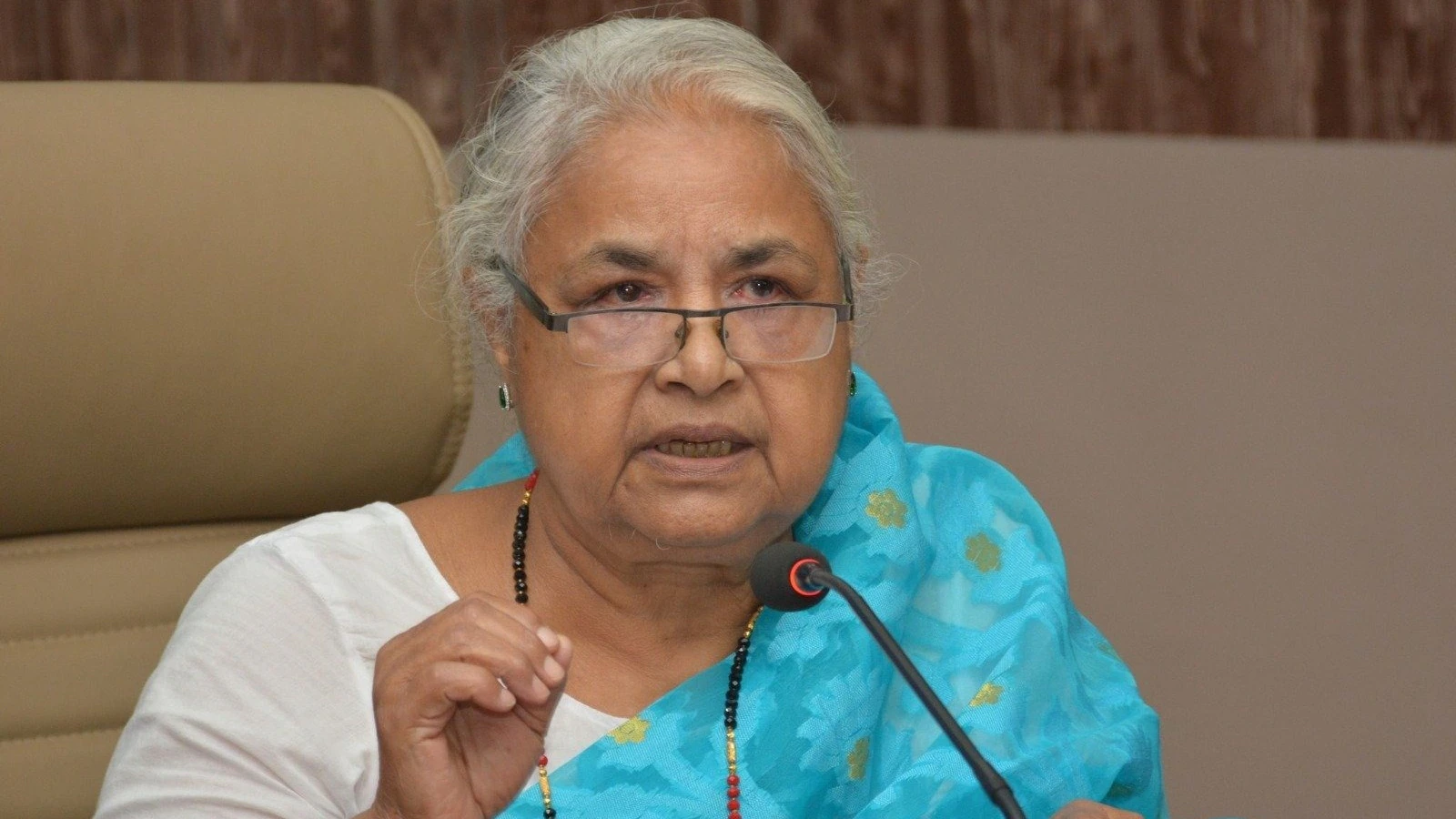
CLEVELAND — As motorists pass by, a robotic arm mounted to a large pickup truck glides out and paints a crisp white crosswalk, then some arrows.
No crew in traffic. No stencils. No overnight shifts. Just one operator in the cab and a machine doing work that’s been largely unchanged for years— until now.
This is the vision of RoadPrintz, a Cleveland startup that’s spent seven years developing robotic road sign painting technology.
Co-founders Wyatt Newman, a former Case Western Reserve University professor, and Sam Bell, a Cleveland Heights mechanic, finally have their first customer: the Missouri Department of Transportation.
“It’s been a long time coming,” said Newman, who began work on the idea while still teaching electrical engineering at CWRU. He jokes that calling a 7-year-old company a startup is a bit of an oxymoron. “But we’re finally rolling.”
The company’s roots are firmly planted in the Cleveland area. It’s an outgrowth of CWRU’s Technology Transfer Office. They’ve taken up space at a former White Motor facility on Cleveland’s East Side. The robotic equipment and computers are mounted on a Ford truck made in Avon Lake. The paint comes from Aexcel in Mentor.
And to pay the bills to get this far, they depended in part on family and friends as investors, and $1.5 million in grants from the National Science Foundation – the first $1 million of which was awarded in 2022.
Newman brought his expertise in electronic and computer systems engineering. Bell, who formerly ran the Lusty Wrench auto repair shop in Cleveland Heights, contributed his mechanical know-how.
Together, they led the work to build a system they believe could replace the labor-intensive method of painting road signs with robotic precision.
Such special marking work on the roadways is now largely done either with stencils and paint, or with pre-fabricated markings applied to the road with heat, Newman said. This is different.
Mounted on a Ford F-550 Super Duty extended cab truck, the RoadPrintz system uses a robotic arm to paint arrows, bike symbols, lane markings and custom lettering onto pavement.
The system is preloaded with about 80 symbols and numbers that follow the Manual of Uniform Traffic Control Devices requirements. Operators can also type in custom messages on the spot.
“This is not automated striping,” Newman said, noting the difference between this and the line-striping trucks that paint while moving down the roadways.
“This is for the specialty signs — the ones that crews have been laying down with stencils for decades.”
The robot can even place orange cones before or after painting, further reducing the need for workers to step into traffic. The paint dries in about 10 minutes, allowing traffic to quickly return to normal.
“It’s hard work, terrible hours and dangerous,” Newman said of traditional methods. “This changes everything.”
Missouri first put the system through a trial before agreeing to the purchase, Newman said. A spokesperson for the Missouri Department of Transportation said that although the contract has not yet been fully executed, the agency plans to buy one of the trucks.
“There are several benefits, but the greatest is minimizing the number of crew members for these types of pavement markings and getting boots off the ground,” Jon Nelson, Missouri State Highway safety and traffic engineer, said in a statement provided by MoDOT.
Newman estimates the department will recoup its $500,000 investment in just two years through labor and productivity savings.
“This is an industry that has been stagnant for 100 years,” he said. “We hope to disrupt it — and completely change the way it’s done.”
At a recent open house showcasing the technology, Cuyahoga County Executive Chris Ronayne praised the innovation.
“You’re upping the game at RoadPrintz,” Ronayne said. “You will save us money. We need a lot of efficiencies.”
While the county contracts out its painting needs, Cleveland does some of its work in house, Council President Blaine Griffin said. He promised after the open house ceremonies that he would speak with the Public Safety Department about how RoadPrintz’s technology could be used to free up workers for other tasks.
RoadPrintz has already tested its equipment in the city, painting crosswalks on Public Square and bus-only lane markings along Euclid Avenue. With its first sale near, the company is looking to ramp up production and expand its reach.
“This is safer, faster and more precise,” Newman said. “And it’s made right here in Ohio.”



